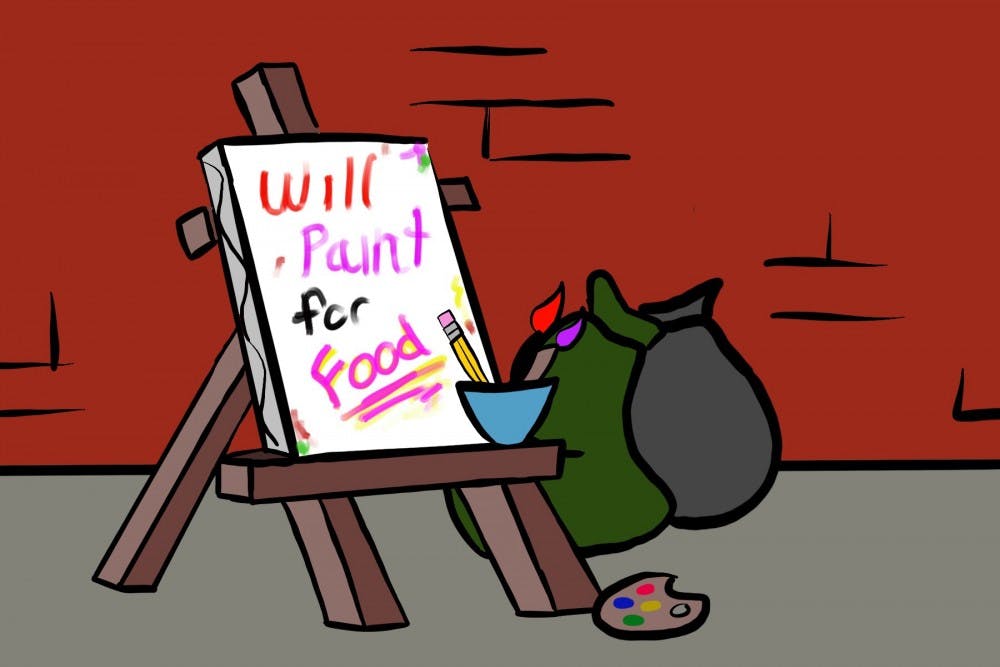It is an age-old idea among the creative community that pain is necessary to create art. Artists boast that they have experienced pain, that they have suffered or are suffering from something.
Media perpetuates this trope. "E! True Hollywood Story" and "VH1 Behind the Music" highlight artists' rags-to-riches stories. Even fictional movies and TV shows portray struggling actors trying to make it — such as the character Penny on "The Big Bang Theory."
This can set up unhealthy ideals for students with majors in the arts. There is a pressure to experience pain, in order to prove that you are talented. However, meaningful art can be born from happiness and contentment.
Many times on competition shows before a contestant is about to perform, a clip featuring the person's sob story is shown, fostering the idea that only pain can inspire quality art.
These shows are exceptionally popular among young people, only reinforcing the idea among artists that success in the creative community comes from pain.
Many artists say themselves that it is their struggles that inspire their art. Take Kesha's newest album "Rainbow," for example, which was inspired by the horror she went through with her former producer.
There is not doubt that wonderful art could be derived from pain. As an artist, I too find making art to be therapeutic. Similar to other creatives, I have gone through struggles in my life, and it is performing which has often gotten me out of bed.
However, I started to wonder if the best artists are inherently the ones that have struggled, and if the best art is a product of pain.
"Everybody has pain. It is not necessary for an artist to turn their suffering into their art," said Lance Gharavi, associate professor in the ASU School of Film, Dance and Theatre and assistant director of theater.
There is no rule saying artists have to be inspired by their pain to make art. Students should have the opportunity to draw inspiration from a wide range of emotions.
This is particularly important in college — an era of major cognitive development.
"'Is the best art made from pain?' I don't know. I suppose art comes from all different sources," Gharavi said.
We root for the people with "sob stories" because we share their experiences, but we can share in the positive moments as well. Suffering is a part of the human experience, but it is not the only experience, nor is it the most interesting or productive one.
Art is subjective. The bottom line is: We will all suffer at some point.
Pain can inspire artists to create art, but it is not necessary. Students need to be able to experience and create art that comes from any emotion they may feel, whether it is positive or negative.
Reach the columnist at miharri1@asu.edu or follow @IdalisHarris on Twitter.
Editor’s note: The opinions presented in this column are the author’s and do not imply any endorsement from The State Press or its editors.
Want to join the conversation? Send an email to opiniondesk.statepress@gmail.com. Keep letters under 500 words and be sure to include your university affiliation. Anonymity will not be granted.
Like The State Press on Facebook and follow @statepress on Twitter.
Continue supporting student journalism and
donate to The State Press today.




